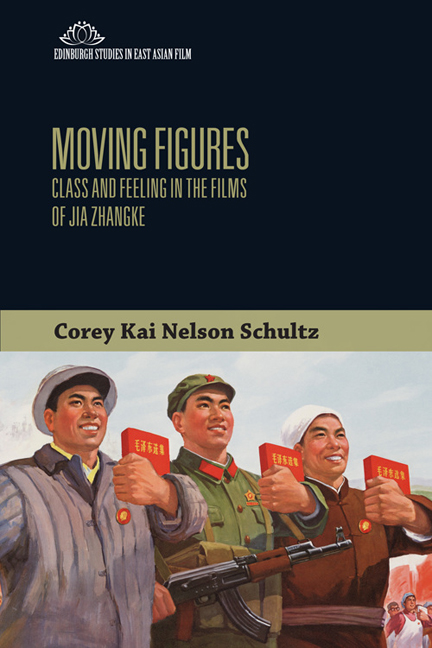Book contents
- Frontmatter
- Contents
- List of Figures
- Acknowledgments
- Introduction
- 1 The Worker Class: From Leader to the Margins
- 2 The Peasant and the Mingong: From Empathy to Sympathy to Looking Back
- 3 The Soldier: From Degraded Reproduction to Avenging Hero
- 4 The Intellectual: Power and the Voice
- 5 The Entrepreneur: From Crook to “New Reform Model”
- Notes
- Filmography
- Works Cited
- Index
5 - The Entrepreneur: From Crook to “New Reform Model”
Published online by Cambridge University Press: 10 May 2023
- Frontmatter
- Contents
- List of Figures
- Acknowledgments
- Introduction
- 1 The Worker Class: From Leader to the Margins
- 2 The Peasant and the Mingong: From Empathy to Sympathy to Looking Back
- 3 The Soldier: From Degraded Reproduction to Avenging Hero
- 4 The Intellectual: Power and the Voice
- 5 The Entrepreneur: From Crook to “New Reform Model”
- Notes
- Filmography
- Works Cited
- Index
Summary
Introduction
In Chapter 1, I wrote that, in Maoist rhetoric, ruins were seen as signs of development, Mao himself proclaiming “there is no construction without destruction … Put destruction first, and in the process you have construction.” In Jia's films, the Maoist worker, peasant, and soldier figures are in ruins, while the entrepreneur has risen from their destruction. Thus, just as the worker class was created by the socialist state to industrialize the nation and help build the planned economy, now a class of entrepreneurs has been created during the Reform era to develop the market economy. In this chapter, I conclude by analyzing the figure of the entrepreneur and compare its two representations and structures of feeling. The first is that of a sinister criminal figure who is found primarily in the earlier films (1997–2006), but reappears (2013–2015), and the second is a benevolent rushang (儒商) – an intellectual turned businessperson, or a businessperson who has an intellectual's character – which appears in the films 2007–2012. In this chapter, I posit that the figure of the threatening entrepreneur in the films concretizes the anxiety surrounding the Reform era, and that its presence evokes initial feelings of insecurity, reflecting confusion, economic abuses, and fear of change, while the rushang is a figure of hope and one that represents the benefits of Reform and is proffered as a possible solution to some of these problems. These contradictory representations evoke the varying feelings around social changes that have occurred during the past 35 years of economic reforms, and thus create their own different structures of feeling. As written earlier, Raymond Williams argues that structures of feeling emerge from a particular time, space, and generation, and capture the “feeling” of the age. In this chapter, I use this concept to examine how the different entrepreneur figures in the films capture the changing feelings around Reform, including Reform as threatening and Reform as opportunity. Furthermore, according to Williams, structures of feeling differ between generations, are connected to social changes, and are responses to the rise, fracture, or change of a class.
- Type
- Chapter
- Information
- Moving FiguresClass and Feeling in the Films of Jia Zhangke, pp. 136 - 162Publisher: Edinburgh University PressPrint publication year: 2018



